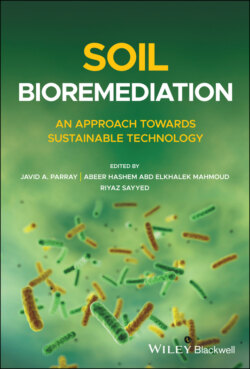Читать книгу Soil Bioremediation - Группа авторов - Страница 16
1.3.3 Bioaugmentation Versus Biostimulation
ОглавлениеApplication of bioaugmentation or biostimulation techniques for bioremediation processes significantly depends upon the prevailing environmental conditions. Hamdi et al. [80] found that the efficiency of a remediation process depends on the added microorganisms, rather than the nutrient content [80]. Bento et al. [82] compared bioremediation of diesel oil by natural attenuation, biostimulation, and bioaugmentation. Of the three bioremediation techniques, i.e. natural attenuation, biostimulation, and bioaugmentation used to degrade diesel oil, the best results were revealed by bioaugmentation after inoculation of microbes selected from the polluted site. Evidently, native microorganisms have more possibility to endure and procreate when they are reintroduced into the site, as compared to foreign strains [23, 82]. However, several reports suggest that the use of native cultures were not particularly effective in the removal rates of hydrocarbons however, stimulation was very effective in such a case [83]. For native and foreign microorganisms, biostimulation provides suitable nutrients and encouraging conditions. Thus, biostimulation becomes a feasible method in those cases where microorganisms adapt due to exposure to hydrocarbons at polluted sites. Eventually, the population, which has adapted to the conditions, exhibits high bioremediation rates and, consequently, biostimulation is more appropriate in such cases [61, 84]. However, natural acclimatization by the indigenous microbial population often requires a longer time period due to an extended lag phase leading to prolonged bioremediation processes [85]. Bioaugmentation and biostimulation techniques are now developing as complementary techniques due to the various limitations when they are applied separately. Hamdi et al. [80] amended PAH contaminated soil using both bioaugmentation and biostimulation and achieved higher PAH dissipation rates, remarkably for anthracene and pyrene, than those observed in unamended PAH‐spiked soils.
